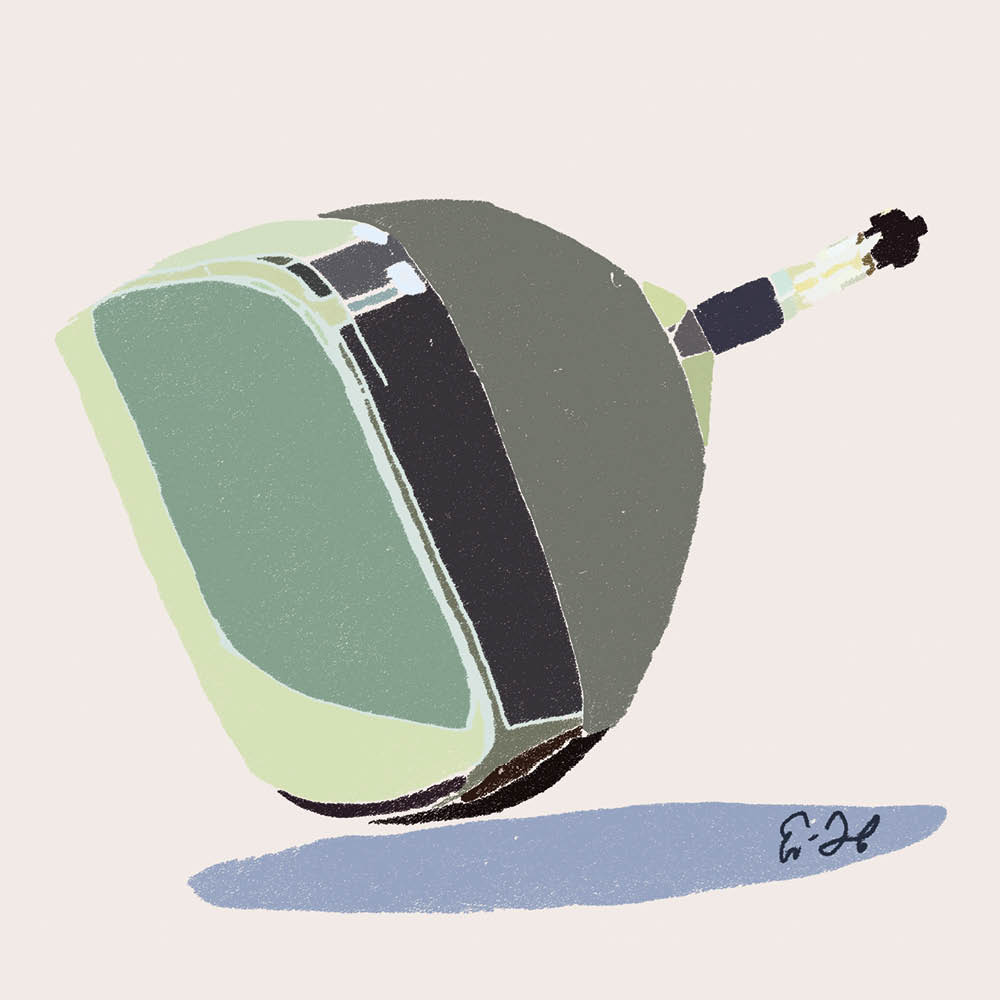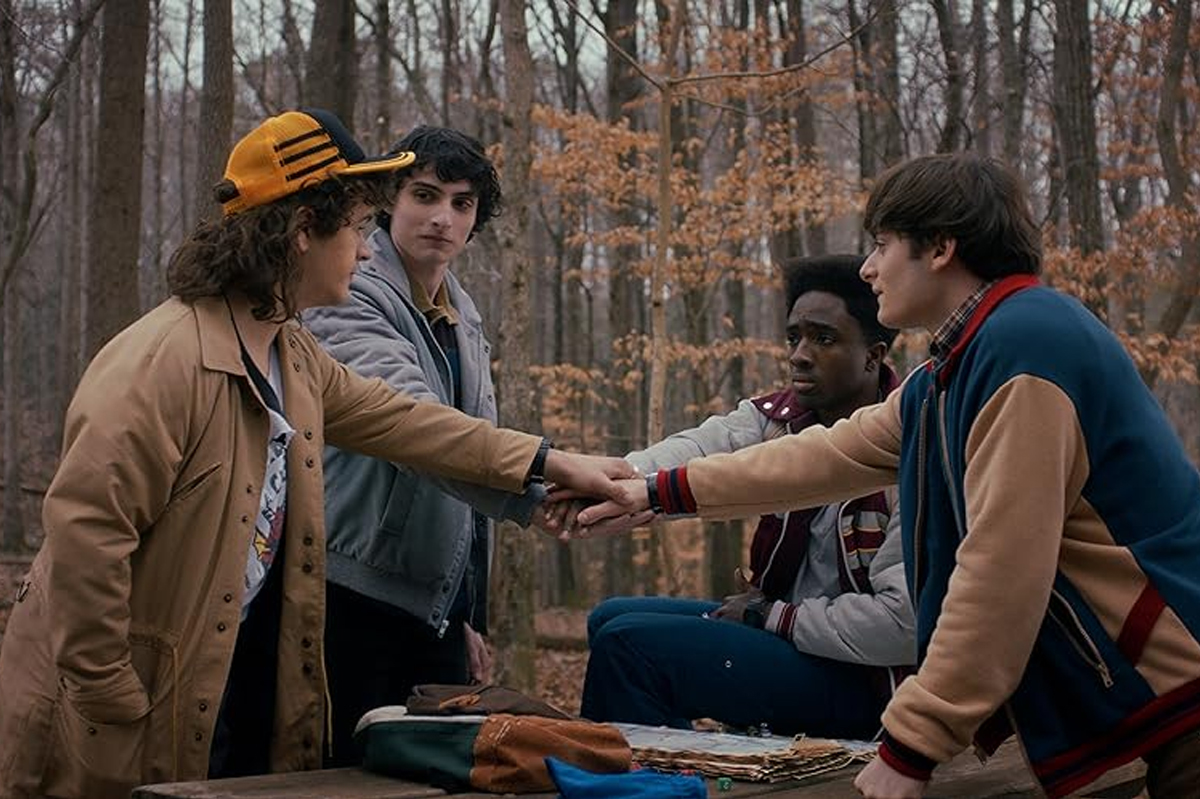Cathode-ray televisions — the thick, “fat” CRT TVs of my youth — were dead. You couldn’t find them in secondhand shops, because who would buy one?
They were sidewalk refuse, chunky e-waste, destined for the dump. In an era of economic dissatisfaction, the reduced cost of slim, high-resolution flat-screen TVs has been a major if often derided benefit. Populists often sneer at globalism — “Who cares that you can get great, cheap TVs when housing is more expensive and there are few jobs?” But even they would still use a stunning 4K — or 8K or 16 K even — OLED TV over the fat screens of the good ol’ days.
And yet, for enthusiasts of retro video games and other esoteric media hobbies, what others see as trash is their treasure. They don’t want the skinny new TVs — they seek the thick screens of childhood nostalgia.
A cathode-ray tube is one of the oldest display technologies, dating back to the late 1800s. Cathode rays — electron beams shot through a vacuum — were first discovered by German physicists Julius Plücker and Johann Wilhelm Hittorf; Karl Ferdinand Braun learned to capture and control them with his invention of the first CRT in 1897. There were various ideas about how they could be used — to transfer information, send messages, power oscilloscopes — but screens were the obvious destination. Japanese manufacturers such as Sony and Toshiba would become pioneers of applying them to televisions, and “Braun tube” is still the common nomenclature for CRTs in Japan.
“It sounds nuts, but it’s using an enclosed piece of glass with an emitter or a ‘gun’ that’s energized and that gun is literally shooting a beam of data into a portion of the screen on the glass that you see,” CRT television specialist Steve Nutter says. “And it produces that image so fast, your eyes see it as one continuous image.”
Over the past few decades, cathode ray tubes have been replaced by LCD, plasma and OLED technologies, which are cheaper, more reliable, more easily produced at scale and can display higher resolutions. Plus, they don’t violently implode, unlike those electron-filled, vacuum-sealed glass CRTs.
But if you try playing an old video-game console, like the Nintendo Entertainment System or Sony PlayStation 2, on the newer TVs, they’ll work, but not well. Even a casual observer will notice that the picture looks terrible. That isn’t because the graphics are old; it’s because today’s flatscreen displays were not designed to be used with them.
By contrast, break out the vintage CRT television from your basement or attic clutter (without giving yourself a hernia), plug it in, and the 8-bit worlds of Super Mario Bros. and The Legend of Zelda look just as they should. Millennial memories of childhood rush in. Preserving that pop-culture history is one of the core reasons that CRT TVs will still be important for decades to come.
Nutter is one of the few people in the United States who has the skill set and technical knowhow to repair CRTs, long after hardware manufacturers and most electronics shops have ceased support for them. His YouTube channel “Retro Tech” features regular videos showing restorations of CRTs which come into his shop, as well as others that aim to educate the public about this analog technology.
Back in the 1980s when video-game consoles were becoming more common in American households, the average consumer television displayed in around 240p or 480i resolution. That’s a mere fraction of the 4K resolutions most have become accustomed to today, though later CRT models upped the ante to 480p and even high-definition in the early 2000s. Regardless of era, most consumers simply want a television to watch content — and few seriously think about the more technical concepts like screen resolutions or video outputs. Go to your parents’ house and they probably have that dreadful motion-smoothing turned on; a presentation so grievous for films that Tom Cruise and Top Gun: Maverick director Christopher McQuarrie released a PSA explaining why you should turn it off.
But for video game developers, always searching for new tricks to make their games run as smoothly as possible on weak computers, these distinctions mattered. “To save hardware space, they only drew images on 240 lines and they left the other lines black. That created a progressive image,” Nutter explains. “Normally these CRTs were designed for 480 lines, but this was a trick they found out.”
To get the most out of a CRT, it’s important to understand different video signals. Recent televisions and electronic devices rely on HDMI (High-Definition Multimedia Interface) signals, but vintage tech is an entirely different beast. RF, or radio frequency, was one of the earliest signals used by devices like VHS players and video-game consoles. Even back then the picture quality was quite poor, but the smaller size of CRT displays partially made up for it.
Composite video was a significant upgrade, delivered by that familiar yellow, red and white RCA cable that remained a constant, attached to the back of your set throughout the 2000s. S-video is even better, due to its separation of luma (luminance) and chroma (color) signals, while component video was the highest possible quality for standard definition before HDMI took over in the early 2010s. Across the pond, many European countries employed SCART cables to take advantage of RGB video, but most Americans didn’t have access to this format.
Proper high-definition video largely made earlier formats obsolete, but CRTs actually did make the jump to HD right as plasma and LCD screens were hitting store shelves. Broadcast television began adopting HD toward the end of the 2000s, and research into even larger resolutions was already in development years earlier.
“Japan announced their version of 8K, Super Hi-Vision, in 2003,” says Keith Raney, who like Steve Nutter is one of the few Americans who still repairs CRTs. “I knew that was coming, and I remember thinking ‘I need to be ready to buy an 8K TV in 2020 because they’re definitely going to have it for the Olympics.’”
But while gamers have many demands when it comes to playing their consoles, HD CRTs were not necessarily the best choice back in the day despite the better picture quality.
“They were never really capable of that [good] HD reproduction as other [television formats],” Nutter says. “There’s a lot of things that we realize as gamers that weren’t important to the industry as far as their main audience buyers. Processing and video lag were present even in a lot of high-end sets but it didn’t matter because they were only worried about picture quality.”
Today, those high-end fat-screen TVs are interesting novelties, a quirky part of display history that ultimately had limited usability. But there are two kinds of CRTs in particular that remain highly sought after by collectors: professional video monitors, or PVMs, and broadcast video monitors, or BVMs.
These expensive sets were specifically designed with high quality parts available to provide sharp detail and more accurate color reproduction, as they were intended for media professionals, television broadcast stations and hospitals. For a television studio that needed to carefully adjust its broadcast signal for millions of homes across America or a doctor that needed multiple screens to perform complex surgery on patients, a normal CRT was simply not going to cut it. PVMs and BVMs are largely considered to be the Rolls-Royces of CRTs.
But during the early 2010s, hospitals and television stations were practically giving them away to make room for the adoption of modern display technology. This provided a brief window of opportunity to secure them for next to nothing, but like most pieces of nostalgic tech, there’s now money to be made off their inflated reseller prices.
While thousands of CRTs were once being left out on curbsides for free pick-up, online sellers have caught wind of demand among retro tech enthusiasts and gamers. Sony Trinitrons, PVMs and BVMs can fetch hundreds or thousands of dollars online depending on their features and the quality of their video output. And then (of course) there are the scams. On AliExpress, shady Chinese sellers advertise “new” CRTs that are made from leftover, inferior parts.
Even if you acquire a good PVM or BVM, inevitably it will require restoration since most of these monitors were on constantly throughout their expected lifespan. Screen burn-in is a major issue for CRTs and some components require replacement after many years or decades of use; but, being more “mechanical” than an LCD or OLED set, they are actually fixable. If the tube is broken, it can only be salvaged for parts, but if it remains intact, most sets can be repaired. Even if they’re unfixable, they can’t really be trashed.
“They’re not easily disposable at all,” Nutter says. “In the United States, the EPA actually says it’s best to keep [CRTs] going as long as you can. There’s not really a viable way to recycle them because of the glass having lead embedded in it.” The best solution is repurposing certain components for other niche purposes. As Raney explains, “There are special kinds of glass [rods] with a special kind of chemical composition and glass blowers really love them. If you have a broken CRT and you’re absolutely done with it, you can harvest those glass rods out of the necks of the CRTs.”
We’re amid a retro-medium revival, with vinyl records outselling CDs, and major artists such as Taylor Swift and Olivia Rodrigo selling cassettes of their new albums (there are even cassette player start-ups, like We Are Rewind). But we won’t see the same for CRT TVs. There’s enough interest for Nutter to have a successful full-time CRT repair business — and Raney to do it as a side gig — and museums such as the University of Kentucky Art Museum are buying their repaired units and putting them on display to educate the masses. But the presence of lead and other materials in CRTs mean that it is highly unlikely that new sets will be made — and given their size constraints and lack of appeal to a mainstream consumer, there’s little incentive to innovate on CRTs to get around this. The factories which originally manufactured them are long gone.
Nutter and Raney are part of a small group of specialists that are dedicated to the restoration and historical preservation of CRTs for as long as they last, which they say is still several decades; given how few people have the required skills, there’s no shortage of work. As Nutter says, “If you’re actually good at something nowadays and you put it on the internet and there’s not a lot of people doing it and you continue to have that reputation, if you’re really good at it, you’re going to end up with a long waitlist.”
This article was originally published in The Spectator’s October 2024 World edition.























Leave a Reply